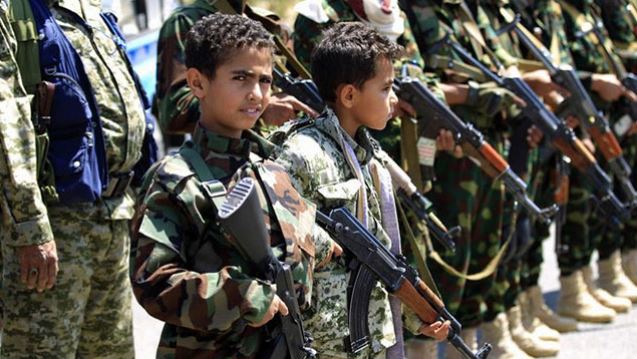Jan 31 (AP/UN) – UN experts said in a new report that nearly 2,000 children recruited by Yemen’s Houthi rebels died on the battlefield between January 2020 and May last year, and the Iranian-backed rebels continue to hold camps and courses encouraging children to fight.
In the report to the UN Security Council circulated on Saturday, the experts said they investigated some summer camps in schools and a mosque where the Houthis disseminated their ideology and sought to recruit children to fight in the seven-year war with Yemen’s internationally recognized government, which is backed by a Saudi Arabia-led coalition.
Subscribe to our Telegram channel for the latest updates from around the world
“The children are instructed to shout the Houthi slogan ‘death to America, death to Israel, curse the Jews, victory to Islam,’” the four-member panel of experts said. “In one camp, children as young as seven years of age were taught to clean weapons and evade rockets.”
The experts said they documented 10 cases where children were taken to fight after being told they would be enrolled in cultural courses or were already taking such courses, nine cases where humanitarian aid was provided or denied to families “solely on the basis whether their children participated in fighting or to teachers on the basis of whether they taught the Houthi curriculum,” and one case where sexual violence was committed against a child who underwent military training.
READ: NeoCov’s potential danger to humans needs further study, says WHO
The panel said it received a list of 1,406 children recruited by the Houthis who died on the battlefield in 2020 and a list of 562 children recruited by the rebels who died on the battlefield between January and May last year.
“They were aged between 10 and 17 years old,” the experts said, and “a significant number” of them were killed in Amran, Dhamar, Hajjah, Hodeida, Ibb, Saada and Sana’a.
Yemen has been engulfed in civil war since 2014 when the Houthis took Sana’a, the capital, and much of the northern part of the country, forcing the government to flee to the south, then to Saudi Arabia.
A Saudi Arabia-led coalition that included the United Arab Emirates (UAE) and was backed at the time by the US, entered the war months later, in 2015, seeking to restore the government to power.
The conflict has since become a regional proxy war that has killed tens of thousands of civilians and fighters.
The war has also created the world’s worst humanitarian crisis, leaving millions suffering from food and medical care shortages, and pushing the country to the brink of famine.
In the past few weeks, shifting front lines on the ground have resulted in escalating attacks following gains by UAE-backed forces in the contested province of Marib, which the Houthis have been trying to take for more than a year.
Coalition airstrikes followed two Houthi attacks inside the UAE using missiles and drones, killing three in strikes near the Abu Dhabi international airport.
The panel of experts said the Houthis have continued their aerial and maritime attacks on Saudi Arabia, with targets close to the border most at risk, and usually attacked several times a week with a combination of drones and short-range artillery rockets.
However, the rebels also continue to strike deep inside Saudi Arabia less frequently using longer-range drones, as well as cruise and ballistic missiles, they said.
In the Red Sea, waterborne improvised explosive devices were used to attack commercial vessels at anchor in Saudi Arabian ports, in some cases more than 1,000km from Yemeni shores.
“The purpose of these attacks was primarily political, i.e. the Houthis want to push Riyadh towards accepting a political settlement beneficial to them,” the experts said. “This contrasts sharply with the use of missiles and un-crewed aerial vehicles within Yemen, the aim of which is often to attain maximum lethality.”
For similar articles, join our Telegram channel for the latest updates. – click here























































